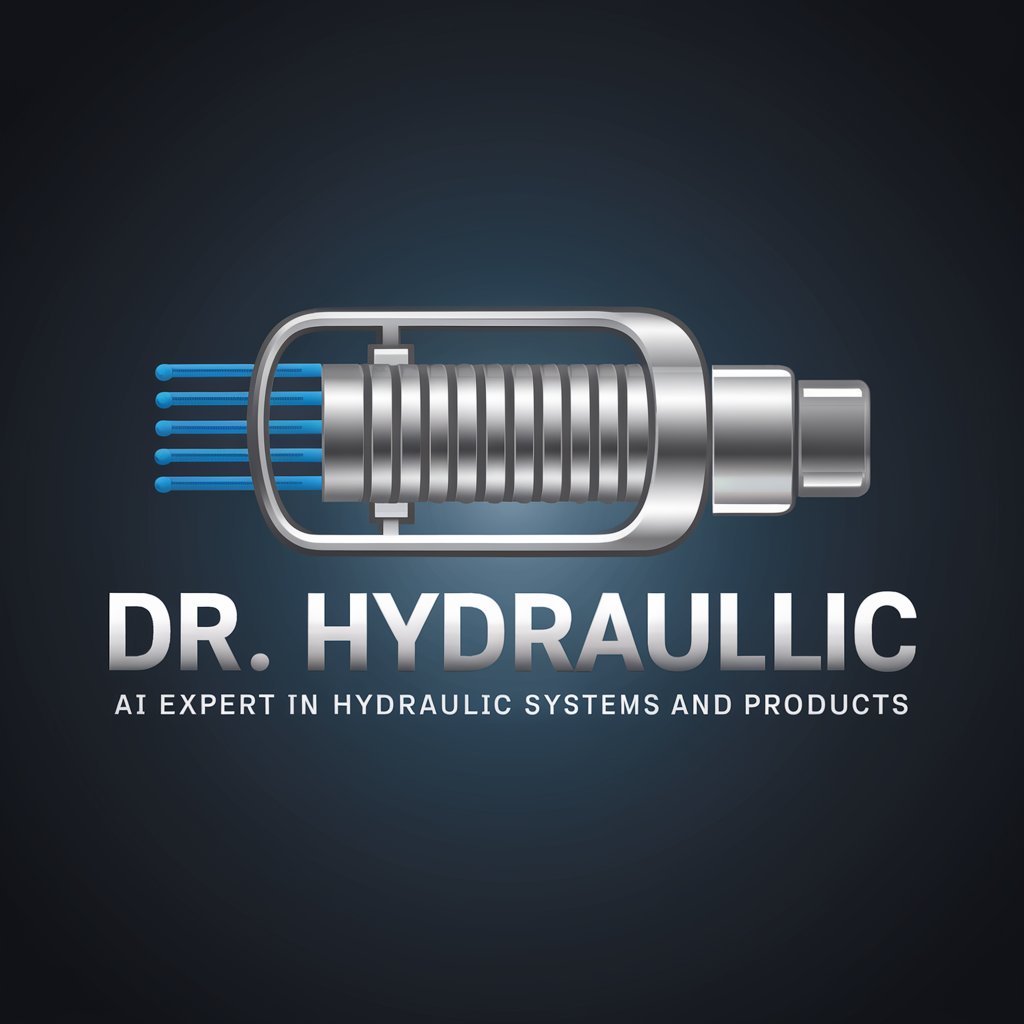Hydraulic Fittings - Comprehensive Hydraulic Fitting Insights

Welcome to Hydraulic Fittings AI! Ready to assist with all your hydraulic needs.
Empowering Hydraulic Connections with AI
Explain the benefits of using hydraulic fittings in high-pressure systems.
Describe the differences between compression fittings and crimp fittings.
What are the key factors to consider when selecting hydraulic fittings?
How do threaded hydraulic fittings ensure a secure connection?
Get Embed Code
Introduction to Hydraulic Fittings
Hydraulic fittings are critical components used in hydraulic systems to connect hoses, pipes, and tubes, enabling the transfer of fluid under high pressure. These fittings must be strong, versatile, and reliable to ensure the safety and efficiency of hydraulic systems. They come in various shapes, sizes, and materials, designed to suit different types of connections and pressure ratings. For example, an elbow fitting changes the direction of the fluid flow, while a coupling connects two similar pipes. The design purpose of hydraulic fittings is to create a secure connection that can withstand the system's operating pressures and conditions without leaking. A common scenario illustrating their use involves the construction industry, where hydraulic fittings connect the hoses and pipes of a hydraulic excavator's arm, enabling precise control and movement of the arm through hydraulic pressure. Powered by ChatGPT-4o。

Main Functions of Hydraulic Fittings
Connecting different components
Example
Adapter fittings
Scenario
In a hydraulic system, adapter fittings are used to connect components with different thread types or sizes, allowing for a seamless flow of hydraulic fluid across the system.
Changing fluid direction
Example
Elbow fittings
Scenario
Elbow fittings are used when the hydraulic lines must navigate around obstacles or change direction within the system, such as in agricultural machinery to route the hydraulic lines around the frame of the machine.
Controlling fluid flow
Example
Valve fittings
Scenario
Valve fittings are integrated into hydraulic systems to control the start, stop, and flow of hydraulic fluid, critical for applications like variable speed control in hydraulic motors.
Splitting or combining fluid flow
Example
Tee and cross fittings
Scenario
In a hydraulic power system, tee and cross fittings are utilized to split hydraulic fluid flow to operate multiple cylinders simultaneously or combine flow from different branches for efficient fluid management.
Sealing and preventing leaks
Example
O-Ring Face Seal fittings
Scenario
O-Ring Face Seal (ORFS) fittings provide a leak-free connection in hydraulic systems, essential in applications requiring cleanliness and high-pressure capability, such as in food processing equipment.
Ideal Users of Hydraulic Fittings Services
Manufacturing and Industrial Sectors
Businesses involved in manufacturing, construction, and heavy machinery are primary users. They benefit from hydraulic fittings to maintain and repair machinery and equipment, ensuring operational efficiency and safety.
Agriculture Sector
Farmers and agricultural equipment manufacturers rely on hydraulic fittings for machinery like tractors and harvesters, where hydraulic systems are integral for mechanized farming operations.
Automotive and Aerospace Industries
Companies in these sectors use hydraulic fittings for the assembly and maintenance of vehicles and aircraft. The reliability of hydraulic systems is crucial for the safety and performance of their products.
Maintenance, Repair, and Operations (MRO) Providers
MRO providers serve various industries by supplying hydraulic fittings and related services, ensuring that hydraulic systems are maintained to high standards and operate without failure.

Using Hydraulic Fittings: A Step-by-Step Guide
1
Start by visiting a platform like yeschat.ai to explore hydraulic fittings options without the need for signing up or subscribing to a premium plan.
2
Identify the specific type of hydraulic fitting required for your application, considering the size, pressure rating, and material compatibility.
3
Ensure you have all necessary tools and safety equipment on hand, such as wrenches, thread sealant, and protective eyewear.
4
Follow proper installation procedures: Clean all threads or surfaces before connection, apply sealant if needed, and tighten fittings according to specifications to ensure a secure, leak-free connection.
5
Regularly inspect and maintain fittings to prevent leaks and wear. Replace fittings and seals as needed to ensure the longevity and reliability of your hydraulic system.
Try other advanced and practical GPTs
Pardot GPT
Empowering Pardot Success with AI

Pardot Helper
Enhancing CRM with AI Power

Sour Grapes 🍇
Craft Games Smartly with AI

Obsidian PA
Empowering your ideas with AI

Univerzální převodník
Transform Anything, Effortlessly.

AI Tutor
Empowering AI Education with Personalized Tutoring

Dr Hydraulic
Empowering hydraulic understanding with AI

BiblioVisión
Visualize Scripture with AI Art

Investigación Científica IA
Empowering Research with AI

Bash Master
Empower Your Scripts with AI

Codeur mbash
Build your mini bash with AI

Bash Expert
Empowering Scripting with AI

Frequently Asked Questions about Hydraulic Fittings
What materials are hydraulic fittings made of?
Hydraulic fittings are commonly made from materials like steel, stainless steel, brass, and plastic, each offering different benefits in terms of strength, corrosion resistance, and compatibility with various fluids.
How do I choose the right fitting for my hydraulic system?
Selecting the right fitting involves considering the system's pressure requirements, the compatibility of materials with the hydraulic fluid, the type of connection (threaded, flared, etc.), and the size of the pipes or hoses being connected.
Can hydraulic fittings be reused?
Some hydraulic fittings, especially those designed for mechanical grip or push-to-connect installations, can be reused if they are in good condition. However, fittings that show signs of wear, damage, or corrosion should be replaced.
What are the common causes of leaks in hydraulic fittings?
Leaks can be caused by improper installation, incompatible materials, over-tightening, under-tightening, wear and tear, and damage to the fitting's sealing surfaces.
How do I prevent hydraulic fitting failures?
To prevent failures, ensure proper installation, use fittings that match the system's specifications, regularly inspect and maintain your hydraulic system, and immediately replace any damaged or worn components.
